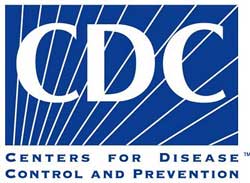Foodborne parasites can cause serious illness and death. Last summer, a cyclospora outbreak sickened at least 631 people in 25 states. This summer, the single-celled parasite is back with cases of infection reported in at least 13 states, including Texas where 155 people have become ill.
 Despite the recent outbreaks, cyclosporiasis is not a common parasitic infection in the U.S. Two other parasites, most commonly found in pork, beef and game are leading causes foodborne seizures and death, according to a recent report from the Food and Agriculture Organization of United Nations ranked the top 10 foodborne parasites worldiwde.
Despite the recent outbreaks, cyclosporiasis is not a common parasitic infection in the U.S. Two other parasites, most commonly found in pork, beef and game are leading causes foodborne seizures and death, according to a recent report from the Food and Agriculture Organization of United Nations ranked the top 10 foodborne parasites worldiwde.
Neurocysticercosis is the leading cause of seizures from infectious disease. Every year, about 2,000 Americans are diagnosed with neurocysticercosis, which is transmitted by ingesting food that has been contaminated with microscopic amounts of fecal matter from someone who has a pork tapeworm. The fecal matter contains tapeworm eggs which, once ingested, hatch into larvae and make their way to the brain. The disease, which can cause neurological problems and death, is considered among a group of “Neglected Parasitic Infections” that are not well understood by health care providers.
Toxoplasmosis is a leading cause of death from foodborne illness, according to the Centers for Disease Control and Prevention (CDC). Toxoplasmosis is contracted by eating undercooked, contaminated meat such as pork, lamb, and venison; drinking water contaminated with Toxoplasma gondii bacteria, or through inadequate hand washing after having contact with cat feces that contain Toxoplasma.





How many Americans are diagnosed with neurocysticercosis every year?
According to MedScape, 2.5 million people worldwide have the adult tapeworm and many more are infected with cysticerci. The incidence has been increasing in the U.S. in the past few years. It’s endemic in Central and South America, sub-Saharan Africa, India, Indonesia, and China.